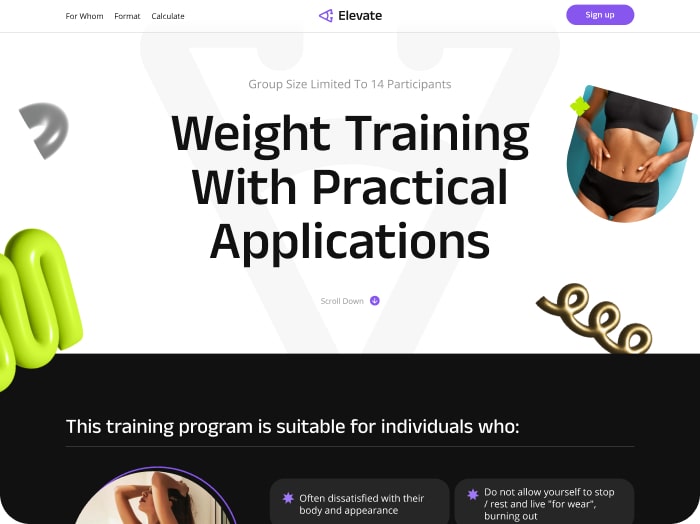Transforming Lives: The Power of Calorie Data in Client Success Stories
When it comes to weight loss and fitness, one of the most compelling ways to inspire and motivate others is through real-life success stories. These stories not only provide hope but also serve as tangible evidence of the effectiveness of a particular approach. In this article, we will delve into how using calorie data can be a crucial component in creating before-and-after success stories that resonate with your audience.
The Importance of Calorie Counting
Calorie counting is a fundamental aspect of weight loss and fitness. It involves tracking the number of calories consumed and expended to achieve a calorie deficit, which is essential for weight loss. Several success stories highlight the efficacy of this method. For instance, a user on Reddit shared their journey of losing 97.4 pounds by maintaining a daily calorie intake of 1200-1500 calories, combined with regular walks and workouts.
Another example is Cassie Scroggins, who lost 70 pounds by adhering to a tiered calorie-deficient diet. She emphasized the importance of using a food scale and calorie counter app to accurately track her daily calorie intake.
Tools and Techniques for Calorie Tracking
To create compelling success stories, it’s essential to have the right tools and techniques for tracking calories. Here are some steps and tools that can help:
- Food Scale: A food scale is crucial for measuring the weight of food in grams, which helps in calculating the exact calorie intake. As mentioned by Cassie Scroggins, using a food scale ensures accuracy in calorie counting.
- Calorie Counter Apps: Apps like MyFitnessPal are highly effective for tracking daily calorie intake. These apps allow users to scan barcodes, search for foods, and log their meals to get an accurate count of their daily calories.
- Recipe Analysis Tools: For homemade meals, tools like Recipe Analysis at CalorieCount.com can help calculate the calories in each serving by analyzing the ingredients and portion sizes.
- Regular Weigh-ins and Activity Tracking: Regular weigh-ins and tracking physical activity help in monitoring progress and adjusting the calorie intake accordingly. This was a key strategy for a user who lost 5 pounds in four weeks by eating around 1100-1300 calories per day and incorporating daily walks.
Creating Engaging Success Stories
When creating success stories, it’s important to make them engaging and relatable. Here are some tips to help you craft compelling narratives:
- Include Before-and-After Photos: Visuals are powerful. Including before-and-after photos can make the transformation more believable and inspiring. For example, Kevin and Amanda shared their weight loss journey with before-and-after photos, which helped in illustrating their progress.
- Detail the Journey: Share the challenges and triumphs faced during the weight loss journey. This adds a personal touch and makes the story more relatable. Opal Stacie, for instance, shared her frustration with initial weight loss methods and how counting calories significantly improved her results.
- Highlight Key Strategies: Emphasize the specific strategies that worked, such as using a food scale, tracking calories with apps, and incorporating physical activity. This helps readers understand what they can implement in their own lives.
- Provide Quantifiable Results: Quantify the results by mentioning the number of pounds lost, the time frame, and any other relevant metrics. For example, a user lost 97.4 pounds in about seven months by maintaining a specific calorie intake and exercise routine.
Using Success Stories as Marketing Material
Success stories can be powerful marketing tools. Here’s how you can leverage them:
- Testimonials and Case Studies: Use real-life success stories as testimonials and case studies on your website. This can help build trust and credibility with potential clients. For instance, Calorie Calculator Cloud can feature success stories of clients who have used their tool to achieve significant weight loss.
- Social Media and Blog Posts: Share success stories on social media platforms and blog posts. This can help reach a wider audience and inspire others to start their own weight loss journeys. You can link these stories to your Calorie Calculator Plans to encourage sign-ups.
- Email Marketing Campaigns: Include success stories in email marketing campaigns to keep subscribers motivated and engaged. This can also help in promoting your services and tools.
Conclusion and Next Steps
Using calorie data to create before-and-after success stories is a powerful way to inspire and motivate others in their weight loss journeys. By leveraging the right tools and techniques, you can craft compelling narratives that showcase real-life transformations. If you’re looking to start your own weight loss journey or help others achieve their goals, consider using a calorie calculator to track your progress accurately.
For more information on how to effectively use calorie data and create impactful success stories, explore our other blog posts and resources on Calorie Calculator Cloud.
Remember, consistency and the right strategies are key to achieving significant weight loss. Start your journey today and see the transformative power of calorie counting for yourself!








